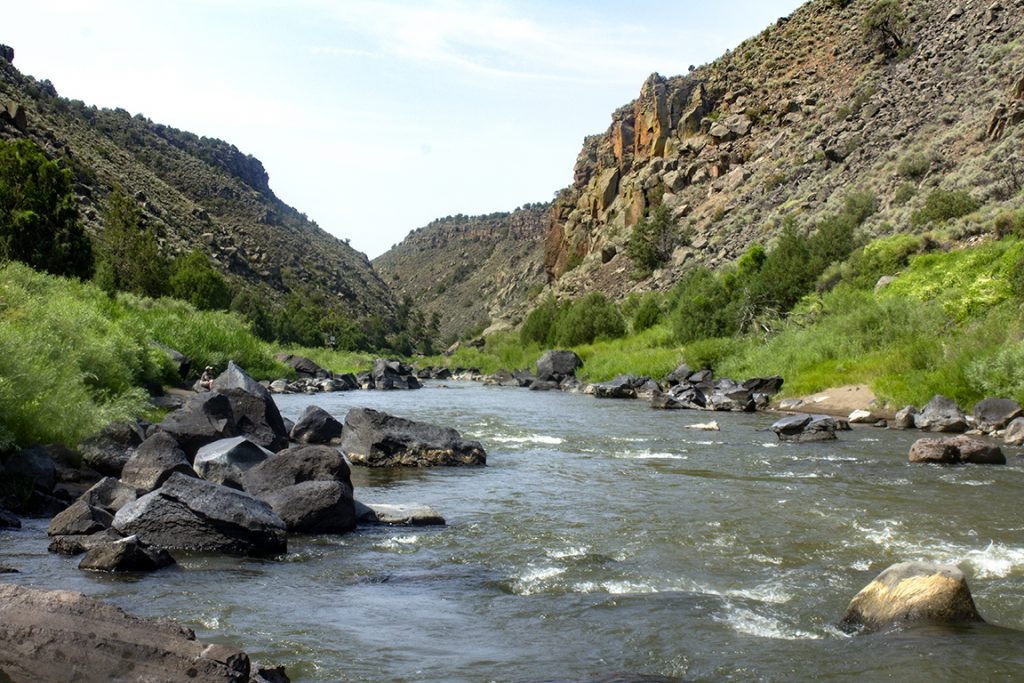Across the American West, rivers and streams are under threat like never before. Caught between the impacts of more than a century of unsustainable water use, archaic laws and policies and exacerbated by the growing effects of climate change, these imperiled streams could be lost if we don’t make a concerted effort to rethink how we value and manage New Mexico’s rivers and waters.
In 2018 Michelle Lujan Grisham outlined her plan for New Mexico’s water future. Built upon the foundation of stewardship, sustainability, and equity, she recognized how climate change is intensifying our water challenges and promised to develop a 50-year water plan for the state. Your voice is needed to ensure that New Mexico’s rivers, streams, fish, and wildlife are adequately considered in this plan.
The state recently released its Leap Ahead Assessment, which identifies both current and projected challenges and threats to New Mexico’s waters and serves as the basis for the 50-year water plan. But the 241-page document fails to prioritize some of the most important ways in which New Mexicans connect with the state’s waterways. Use your voice today to tell New Mexico state agencies that these are important values for all of us and cannot be excluded.
The Office of the State Engineer and Interstate Stream Commission are currently accepting written comments from members of the public through October 15, 2021. You can submit your comments via their comment portal here.
To assist you, we’ve compiled this list of talking points that you may want to include in your comments to the State of New Mexico:
- The purpose of the 50-year water plan is to “rethink how we manage our water supply.” If New Mexico is serious and committed to this idea, any planning efforts must include the needs of the environment;
- The three basic principles the Governor outlined to guide water management in the state are stewardship, sustainability, and equity; therefore, the process must be inclusive of all water values;
- New Mexicans value the rivers, streams, and plant, fish, and wildlife communities that depend on them. They’re too important to lose;
- Ecological health. The Leap Ahead Assessment does not adequately address the ecological health of rivers and streams across the state. Your comments will be most impactful if you can include the ways in which you engage with rivers and streams across the state, like taking walks through the Bosque with your dog, cooling off on a hot summer day with your kids, or picnicking along the banks of your favorite river with friends and family;
- Endangered species are not mentioned at all in the 241-page draft. While projected effects to vegetation, fish, and wildlife species are mentioned briefly, the draft focuses on upland vegetation species and does not meaningfully address the plethora of native fish and wildlife species that depend on both riverine and riparian habitats in the state. Outlining recovering endangered species as a value you hold dear and time spent birdwatching or boating to view New Mexico’s diverse array of plant, fish, and wildlife species will make your comments most effective;
- There are a total of 59 species in New Mexico federally protected under the Endangered Species Act. The Rio Grande silvery minnow, the southwestern willow flycatcher, and the yellow-billed cuckoo are just a few examples of species that are both federally protected and can be harmed by water management decisions. Any water planning effort must take into account how future conditions will impact these and other imperiled species;
- Recreation. The effects of climate change on the recreational economy of the state are not addressed in the Leap Ahead Assessment. Recreation is estimated to contribute 35,000 direct jobs, $1.2 billion in wages and salaries, and add a total value of $2.4 billion to the state’s economy. Recreation is only mentioned once in the entire 214 pages of the assessment. Including how you and your family recreate in and around the rivers and streams of New Mexico will make your comments most powerful;
- The Leap Ahead Analysis Assessment largely represents the rivers and streams of New Mexico more as pipelines, existing to move water from point a to point b. But these precious waterways would be better thought of as living entities that many different communities, including humans, depend on; and
- Rivers bring greater value than the mere volume of their flows. The future of New Mexico’s rivers and riparian corridors for all life must be adequately considered and be given equal weight in any planning process.
The Governor and agencies of New Mexico need to know that you care about a healthy environment for both people and wildlife. Your comments will be most impactful if you can share how you interact with New Mexico’s waterways and highlight how important ensuring these values are maintained going forward is to you and your community.
Again, please be sure to submit your comments to the Office of the State Engineer and Interstate Stream Commission by 11:59 pm on October 15, 2021. If you have questions on how to best structure your comments, contact Tricia at tsnyder@wildearthguardians.org or 505-396-1752.
